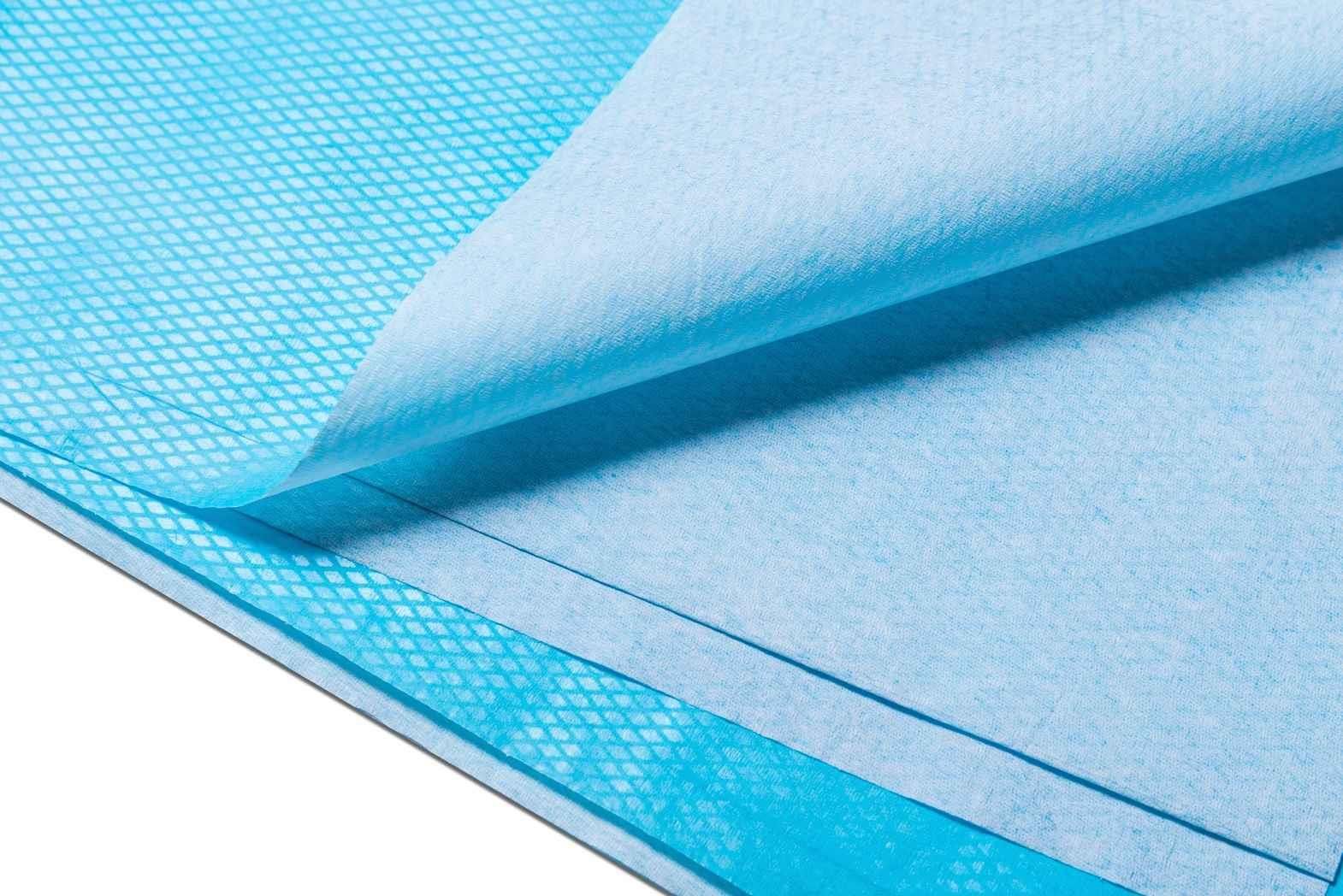With new innovations, there is a variety of single-use textiles available in the market. Moreover, specialty textiles are manufactured for healthcare purposes like isolation gowns, disposable trousers, Howie coats, liquid-resistant laboratory coats, latex anti-allergic gloves, sleeve protectors, surgical gowns, shoe covers, disposable bed sheets, etc. These textiles are durable, lightweight, and inexpensive. Woven and non-woven fabrics are used in manufacturing single-use textiles.
Isolation gowns are lightweight, comfortable, and ideal for visitors and staff members in a hospital, protecting them from infection. Additionally, one can find breathable and liquid-resistant disposable trousers. Superior quality liquid-resistant and infection-resistant laboratory coats have been introduced. Howie coat is stylish clothing that provides good protection compared to normal laboratory coats, with a high collar and cross-over front strap.
Powder-free latex anti-allergic gloves can be used with ease for both hands. To protect floors from shoe-borne infections, disposable overshoe covers are used. They are strong, extremely light, water-resistant, and inexpensive. Moreover, surgical caps, face masks, and sleeve protectors efficiently obstruct microorganisms and bacteria. Similarly, smart disposable diapers have been developed by a research institute in Taiwan, China.
The electronic diaper will be ready for sale by the end of 2013. The diapers are hygienic and wearable due to the antibacterial properties of the non-woven textile used in their manufacturing. The smart diaper will automatically notify the nurse or caregiver when it needs to be changed. This product is very useful for elderly people who are ill for a long period of time. Even disposable smart mattresses are being developed for chronic patients.
Disposable textiles are also used in manufacturing chemical coveralls used by military personnel, mine workers, industrial workers, etc. Chemical coveralls are manufactured to protect against physical, chemical, and biological risks that individuals may face during work. Sometimes, chemicals give no warning signals and can harm workers. Therefore, this protective clothing is worn to save workers at risk. A range of disposable chemical coveralls is available, depending on the specific requirements, and they are manufactured by trusted labels worldwide.
When there is a threat to life, chemical coveralls with the highest level of skin protection are worn. The fabric used for such coveralls is vapor, gas, and liquid-resistant.
Further, there are chemical coveralls that are worn when exposed to least chemical hazards. These are normal working uniform which gives lowest level of protection and are disposable. It is important to choose the right type of textile in making chemical coverall for safety.
One can find variety of disposable products made from textiles and non woven fabrics. There is a range of disposable kitchen dusters available in different sizes and designs. The fabric used in the duster absorbs water quickly and neatly cleans the surface. They are durable and largely used in hotels, restaurants and houses. Besides, best quality raw materials are used in manufacturing non woven disposable fabrics that are widely used for packaging of products used in medical, industrial and healthcare sector.
The leading exporters of disposable textile products are China, Turkey and United States. According to the latest report, there is a huge demand of disposable hygiene products in Turkey. As a result, the Turkish companies as well as many foreign investors get an opportunity to penetrate into their markets. Turkey had just 25 manufacturers of non-woven disposable textiles in the year 2000, which has increased to 65 by mid 2012. Even the production has doubled in last five years.
Turkey exports these products mainly to East European countries, Iran, Iraq, Syria and North African countries. Almost 6% of the world uses the diapers produced in Turkey. Also, there are good prospects of growth for other products like sanitary napkins in Turkey.
Unlike reusable textiles, there is a noticeable effect on the environment when disposable products are used. Each year, innumerable tons of disposable health care wastes are dumped into the landfills of America. Reports have shown that medical waste pollutes the environment. The disposable healthcare textiles in the landfills have the ability get deep into the ground and pollute the water supply.
Secondly, resources like water, energy and chemicals are consumed more for manufacturing single-use textiles, as they cannot be used again and again. Once they are disposed, the resources have to be availed to remanufacture these textiles which results into more consumption of resources. Even there is an increase in the cost of warehousing with disposable products. The single- use textiles require more storage space compared to the reusable textiles.
The cost and the space used in storing the disposable products can be utilized for other purpose which can generate revenue. In fact using reusable textiles instead of disposable ones, especially in the healthcare sector would actually reduce costs and also help in reducing waste accumulation. Considering the facts and figures, reusable textiles help in achieving the green environment goal compared to the disposable textiles.
Disposable textiles are preferred as they cost less than the reusable textiles. Moreover, if the true cost is considered, reusable's cost half the amount of disposable textiles. When calculating the actual cost, it not only includes the cost of the disposable product but also the cost of disposing it. For example, in America the cost of disposing hospital waste is $44 to $68 a ton.
It costs $250,000 alone for a hospital with 300 beds to dispose of the single-used textile products. Studies have shown that medical professionals and even patients prefer the quality of reusable textiles. If the organizations stop using disposable textiles, thousands to million tons of waste can be eliminated.
It can be concluded that using disposable textile has its pros and cons. In future, more number of disposable products manufactured from woven and nonwoven textiles can be seen in the global market due to its low cost, utility and easy availability.
References:
1. Greentoothresources.com
2. Indiantextilejournal.com
3. Speciality-textiles.com
4. Envirosafetyproducts.com









Comments